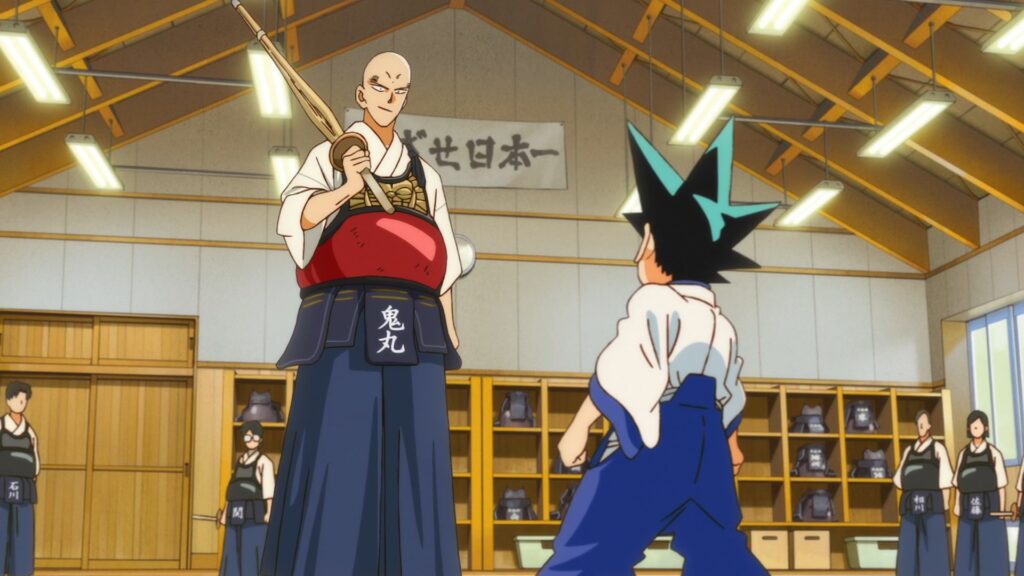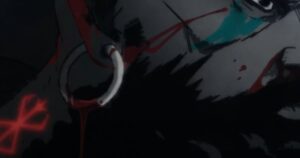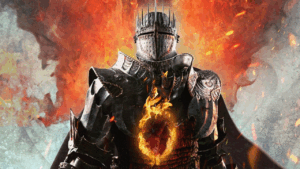Yaiba: Samurai Legend – Episode 1

Hello folks, and welcome back to Wrong Every Time! Today we’re embarking on a new adventure, as we explore the first episode of the currently ongoing Yaiba: Samurai Legend. This production is actually based on a shonen manga that ran from the late ‘80s to early ‘90s, written and illustrated by Gosho Aoyama, better-known for his later series Case Closed. Yaiba actually received an adaptation back around its initial conclusion, but as with their upcoming One Piece, Wit Studio have taken the chance to update a shonen classic for a modern audience.
Granted, I don’t expect Yaiba to feel too updated. From everything I’ve heard about this production, it sounds like director Takahiro Hasui and his team have successfully fused old and new, synthesizing a winningly retro combination that will hopefully offer the same textured aesthetic appeal as Wit’s recent Ranking of Kings. A callback to Dragon Ball-era shonen rambling and Kanada-style posing by the creator of Case Closed and director of Mob Psycho 100’s third season? Yeah, that all sounds delicious to me. Let’s get to it!
Episode 1

Our literal first images are Kanada-style splashes of energy, with multicolored beams of light swerving and colliding into brief, dramatic explosions of color. This then cuts in to a warrior floating above a raging sea, bouncing between dramatic poses while CG waves toss below. Thus Yaiba offers an immediate, dramatic declaration of visual purpose: a return to the exaggerated pose-to-pose action choreography exemplary of the Kanada school, but combined with a voluminous, CG-assisted approach to storyboarding that demonstrates all of the aesthetic innovations of the modern era
Incidentally, if you’re unfamiliar with the term “Kanada-style,” it stems from the animation of Yoshinori Kanada, who was famous for his economical style of animation that focused on moving between dramatic, dynamic poses, prioritizing those seemingly momentum-rich still images over consistent fluidity. The larger umbrella for his style is “pose-to-pose animation,” which generally prioritizes dynamic held poses over straight-through character acting

Kanada took the economy and aesthetics of pose-to-pose animation to an iconic extreme, creating high-impact drawings that feel alive and full of energy in spite of their stillness, and using the distortions of form separating these key poses to imply an even greater sense of momentum through visual obscuration. In modern times, the Kanada style is most clearly represented through the pose-based dynamism of Hiroyuki Imaishi (Panty & Stocking, Kill La Kill), while the medium at large has drifted towards Naoko Yamada-indebted close observation, with top productions often prioritizing more subtle, realistic character acting
You can see here how human figures are often distorted into single bolts of shimmering light between those poses, an aesthetic choice that was perfectly suited to realizing glimmering mecha in space combat

And even when they’re expressed as full forms, that dynamism, like the lines that compose their body are rushing forward or exploding outward, maintains a powerful sense of energy. Bodies reduced to their base silhouettes, distorted into lightning-charged vehicles for action
“From time immemorial, the land and the heavens have shook and trembled under the awesome power of the supernatural blade. Again and again, the swords unleashed thunderbolts and wind, stirring chaos and confusion. But with peace and time, the blades fell into oblivion.”
This focus on Kanada posing also frees up the camera positioning; as the bodies distort into simplified lines, it’s far easier to convey a panning cut, as altering perspective relative to a lightning bolt is much easier than altering it relative to a detailed human form

This battle serves as a showcase for all the things this animation style is good at: dramatic power-ups, big explosions, clashes of wild energy. It also demonstrates what one might consider the style’s fundamental weakness: a sense of weightlessness, like everything is floating and nothing lands with true impact
The camera pans out to reveal an eight-headed dragon, the fabled Yamata no Orochi of Shinto folklore, who is always hungry for young daughters. Incidentally, if you haven’t seen The Little Prince and the Eight-Headed Dragon, please treat yourself to that glorious classic
We pan down to a glowing, sumptuously painted forest, where our presumed lead is practicing kendo. Feels like Wit’s productions have experienced a general improvement in background art design following Ranking of Kings

Yaiba’s design is extremely animation-friendly; as with Aoyama’s Conan designs, he’s all big round shapes with practically no shading, and simplified spiky hair that makes his silhouette easy to pick out. Even his introduction demonstrates how naturally he can be squashed and stretched
His master observes from a tree, while a friendly tiger named Kagetora with a charmingly Tezuka-style face stands by in the bushes. Aoyama’s designs feel retro even for their era, generally harkening back to Tezuka’s rounded simplicity
Ooh, nice thick-lined distortions and smears as a gorilla attacks. Their clashes exemplify this production’s mixture of old and new, embracing the loose, scribbling distortions of webgen animators, but tethering it to the measured poses of Kanada style

Fluidity for major cuts, accompanied by lots of held shots and still poses. A satisfying mixture of this production’s talents and influences
The crew are chased out of the jungle by a stampede of gorillas, and end up stuck up in a shipping container full of bananas
“I’d always wondered what it would be like to be covered in bananas!” Yaiba’s a weird one, huh
Countless more delightfully expressive, heavily distorted drawings as we cut to the OP, all done in a bright, beaming primary colors style that feels extremely appropriate for this retro production, clearly differentiating itself from the ornately shaded, post-production-heavy style used for many modern productions. Between this and Ranking of Kings, I’m really appreciating how Studio Wit are intentionally drawing on the aesthetic traditions of the past, demonstrating how modern conventions are less a natural evolution than simply the style of the moment, and emphasizing the power of combining modern production techniques with classic aesthetic priorities

Granted, I’m obviously biased; I feel like the general embracing of Ufotable’s aesthetic sensibilities has been a net negative for the medium, prioritizing a shallow aesthetic of self-serious live action cinema-aping over coming up with a visual identity that actually matches and facilitates the story you’re telling. I can only hope shows like Demon Slayer and Chainsaw Man represent the nadir of this aesthetic trend, and that we’ll soon be returning to more expressive visual styles
The OP song also feels retro, though cribbed from a different era – this jangly garage rock calls to mind early ‘00s OPs
Yaiba’s plane appears to land in Narita Airport, where we meet our presumed heroine waiting for her father’s arrival

Her name is Sayaka Mine, and her father just won the Asia Kendo Championship. Aoyama’s designs really are quite expressive, and also just generally pleasant to look at
Her father apparently has a rivalry with Kenjuro Kurogane
Ah, and Yaiba is Yaiba Kurogane
Yaiba has apparently never met a girl before, and reacts much like Goku to this discovery
The body language here is excellent; there’s still obviously lots of smears and exaggerated poses, but also some carefully considered character acting, mostly demonstrated through Sayaka’s relatively reserved movement and posture. A visual contrast is thus drawn between the personalities of our two leads, purely through their style of movement

Tokyo Tower introduces us to the city. These backgrounds are obviously digitally assisted, but care is taken in both painting them over with textured overlays, and also populating multiple levels of the background with moving characters in order to create a sense of depth
Kenjuro introduces Yaiba to their new house: Sayaka’s house
Sayaka’s grandmother has an extremely Rumiko Takahashi-reminiscent old lady design, looking more like a frog than a person
Lovely smears as Kenjuro flings her around in celebration

An impressive pan introducing us to the kendo club, featuring close to a dozen participants all sparring. They’re really going all-out on the fluidity of this premiere
Yaiba faces off with the dojo’s finest, Muto. His design actually reminds me of Akira Toriyama’s “heavy” style, the thick-browed design he uses for characters like Piccolo or Nappa
As expected, plenty of dramatic smears separating dynamic held poses as the two face off. Close-up Kanada-style action choreography often takes over the whole screen, embracing angular geometry to draw the eye between targets in the same way cubism emphasizes certain features over others. This composition with Yaiba dominating the left side of the screen makes him appear like a cobra poised to strike, the curve of his form and his angular hair drawing the eye from him towards his opponent

“Swinging like that, he shows all his moves.” Yaiba’s weakness is embodied in his visual style – he’s too obvious, making continuous bold, clearly readable plays. Given how we’ve seen her animated, Sayaka’s critique feels like a natural extension of her visual philosophy
Thinking back on his time facing jungle predators, Yaiba turns his back on his prey, presumably inviting an ambush attack
“Slash not at your prey, but at their presence.” So Yaiba has developed an almost bestial understanding of predation in the natural world, similar to Gon from Hunter x Hunter

Sayaka at last enquires about Yaiba’s pet tiger Kagetora
“Stepping out for a bit. Take care of him.” Kenjuro has apparently gone out for cigarettes, and surely won’t be disappearing for years
Sayaka tells Yaiba that school is full of terrible monsters, creatures that would surely tear him to shreds. Nice to see her biting back, actually countering his jungle philosophy with her city wisdom, rather than just pouting at his eccentricities. Dragon Ball’s secret sauce is that Bulma is actually the best character, but many of Dragon Ball’s successors would utterly squander their female characters (I know, Demon Slayer catching a lot of strays in this writeup)

Yaiba is a big hit with Sayaka’s friends at school, all of whom have delightfully retro hairstyles. Has me missing the aesthetic journey through ‘90s Japan that was Sailor Moon
At the school dojo, we meet our next figure from the OP, a bald-headed young warrior
Thus Takeshi Onimaru takes the stage
We conclude on an overwhelmingly charming ED, celebrating incidental moments of companionship across the city. I think I’m going to like this show

And Done
Well that was delightful! As is apparently becoming a trend for Wit Studio, Yaiba is offering a rewarding mixture of old-fashioned aesthetic sensibilities and newfangled animation proficiencies, with the director and animation director of Mob Psycho 100’s third season applying their formidable talents to a loving, smartly updated recreation of an authentically Dragon Ball-adjacent classic shonen. The art design and animation were engaging throughout, and Aoyama’s story seems like an energetic, entertaining template for this visual buffet. We’ll have to see if Yaiba and Sayaka develop beyond Feral Child and Keeper, but for now, I’m happy to simply enjoy this carefree, lovingly animated throwback to the shonen golden age.
This article was made possible by reader support. Thank you all for all that you do.








